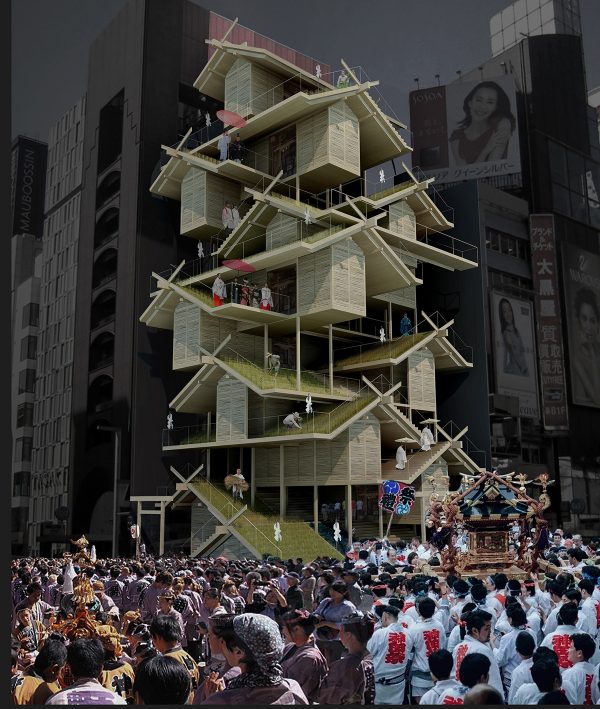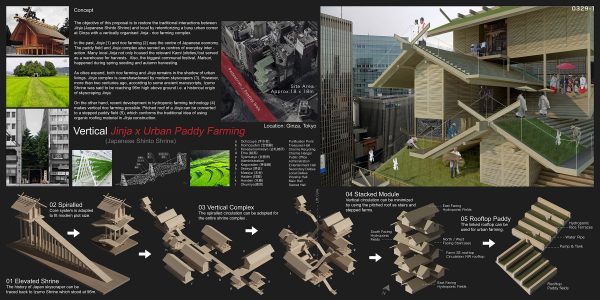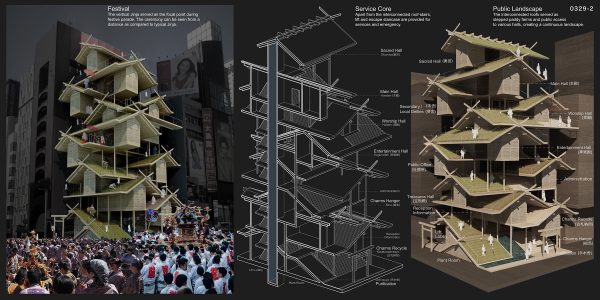Second Place
2018 Skyscraper Competition
Tony Leung
Hong Kong
The objective of this proposal is to restore the traditional interactions between Jinja (Japanese Shinto Shrine) and local people by reterritorizing a busy urban corner in Ginza, Tokyo with a vertically organized Jinja cum rice-farming complex.
In the past, Jinja and rice farming were the center of Japanese economy.
The paddy field and Jinja complex also served as centers of everyday interaction. Many local Jinja not only housed the relevant Kami (deities) but also served as a warehouse for harvests. Also, the biggest communal festival, Matsuri, happened during spring seeding and autumn harvesting.
As cities expand, both rice farming and Jinja remains in the shadow of urban livings. Jinja complex is overshadowed by modern skyscrapers. However, more than two centuries ago, according to some ancient manuscripts, Izumo Shrine was said to be reaching 96m high above ground i.e. a historical origin of skyscraping Jinja.
On the other hand, recent development in hydroponic farming technology makes vertical rice farming possible. Pitched roof of a Jinja can be converted to a stepped paddy field, which conforms the traditional idea of using organic roofing material in Jinja construction.
During Shinto festival, the vertical Jinja served as the focal point during festive parade. The ceremony can be seen from a distance as compared to typical Jinja.
The interconnected roofs served as stepped paddy farms and public access to various halls, creating a continuous landscape. A service Core consists of lift and escape staircase are provided for services and emergency.

















